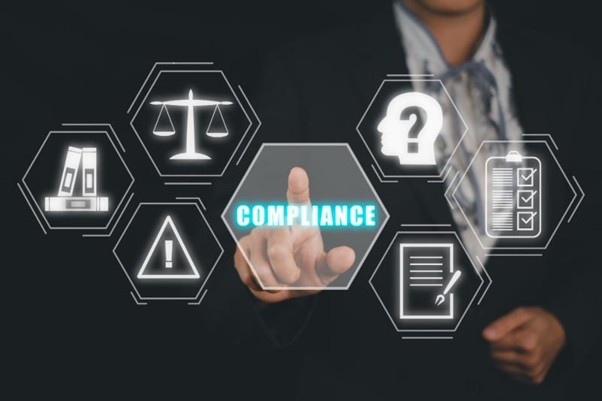Cybersecurity is a constant challenge for companies. New threats appear daily, and all organizations, from the smallest to multinationals, must be prepared to face them.
However, it is not only a matter of defending oneself from possible attacks from abroad but also of doing so within the legal framework regulated in countries and the European Union. That’s where cybersecurity compliance comes in. At Enthec, we help you comply with all cybersecurity regulations.
What is regulatory compliance in cybersecurity?
Cybersecurity compliance refers to the laws, regulations, and standards companies must follow to protect their systems, data, and communications.
It is not only a legal obligation but a fundamental strategy to minimize risks and increase the trust of customers and partners.

Goal of Cybersecurity Compliance
Cybersecurity compliance aims to protect sensitive information and ensure that organizations act responsibly in the face of digital risks. Compliance helps:
- Avoid economic and legal sanctions
- Protect customer and employee data.
- Maintain the reputation and trust of the company.
- Prevent cyberattacks and reduce their impact.
- Establish effective and up-to-date security processes.
- Facilitate the adoption of new technologies in a secure way.
- Ensure business continuity in the face of emerging threats.
Main regulations in cybersecurity
Depending on the industry and location of the company, cybersecurity regulations may vary. However, some of the most relevant in the European area are:
General Data Protection Regulation (GDPR)
It is one of the most well-known regulations and affects any organization that processes the personal data of EU citizens. It requires adequate security measures, notification of data breaches, and transparency in the use of information.
Spanish National Security Scheme (ENS)
The ENS, which applies to public administrations and companies that work with them in Spain, establishes the minimum principles and requirements to guarantee the security of information systems. Its objective is to strengthen data protection and digital services in the governmental sphere.
Payment Card Industry Data Security Standard (PCI DSS)
This security standard is mandatory for all businesses that process, store, or transmit payment card data. It establishes strict measures to protect financial information and reduce the risk of fraud in electronic transactions.
NIS 2 Directive
The evolution of the NIS Directive seeks to strengthen safety in essential sectors such as energy, transport, and health. It requires risk management measures and security incident reporting.
ISO 27001
This international standard sets out best practices for information security management. Obtaining the certification demonstrates the company’s commitment to data protection.

ISO 22301
ISO 22301 focuses on business continuity management. It helps organizations prepare for disruptions and ensure they can continue to operate in the event of serious incidents, including cyberattacks.
Digital Services Act (DSA)
For online platforms and digital providers, this law introduces security and transparency obligations in managing data and content.
Cybersecurity Compliance Challenges
Ensuring regulatory compliance in cybersecurity is not easy. Companies face several scenarios that make absolute cybersecurity difficult:
- Constantly evolving threats. Regulations change to adapt to new risks, which forces them to be updated continuously.
- Lack of resources. Not all companies have specialized cybersecurity and compliance teams.
- Supplier management. Organizations rely on third parties for many digital operations, complicating security control.
- Difficulty in implementation. Implementing security measures that comply with regulations without affecting operability is a challenge.
- Lack of regulatory knowledge. Many companies are not current with the legal requirements, and the penalties can be high.
Strategies to ensure regulatory compliance in cybersecurity
The main strategies for ensuring regulatory compliance in cybersecurity are the following:
Continuous audits and evaluations
It is key to periodically review systems and procedures to detect vulnerabilities and ensure regulatory compliance.
Training and awareness
Employees are the first line of defense. Providing cybersecurity training helps reduce human error and improve security.
Deploying Threat Management Tools
Having cybersecurity solutions that continuously analyze threat exposure allows you to react before incidents occur.
Constant updating
Laws and standards evolve, so staying informed and updating security measures when necessary is critical.
Security outsourcing
Sometimes, specialized cybersecurity providers may be the best option to ensure regulatory compliance.
Integration with other security strategies
Compliance should be part of an overall security strategy that includes monitoring, incident response, and disaster recovery.
Kartos: Your Ally in Threat Management and Compliance
Ensuring cybersecurity compliance may seem complicated, but some tools make the process easier. Kartos, Enthec’s solution, is designed to help companies manage their threat exposure continuously.
Kartos allows:
- Monitor and analyze threats in real-time.
- Assess risks and vulnerabilities in systems.
- Generate detailed reports to comply with regulations such as ENS or ISO27001.
- Improve security without affecting business operations.
- Adapt quickly to changes in legislation and safety standards.
- Automate regulatory compliance processes to optimize resources.
It’s not just about avoiding penalties, it’s about building a safer and more resilient digital environment. With tools like Kartos, businesses can stay ahead of risks and maintain control over their security.
If you’d like to learn how Kartos can help you protect your organization and stay compliant, contact us and learn how to manage your threat exposure efficiently.


